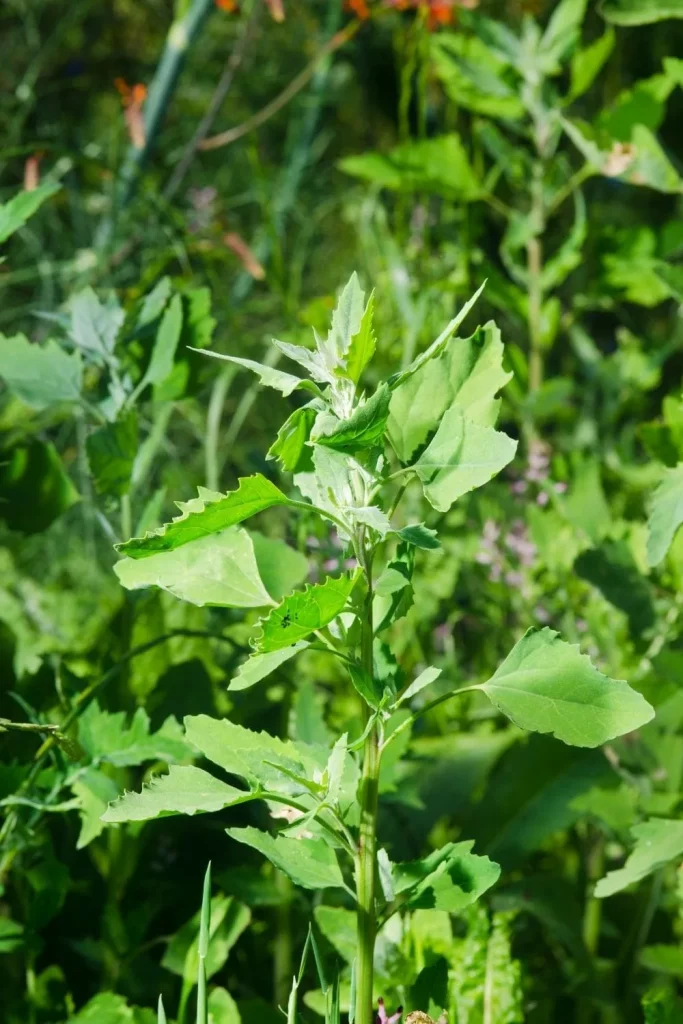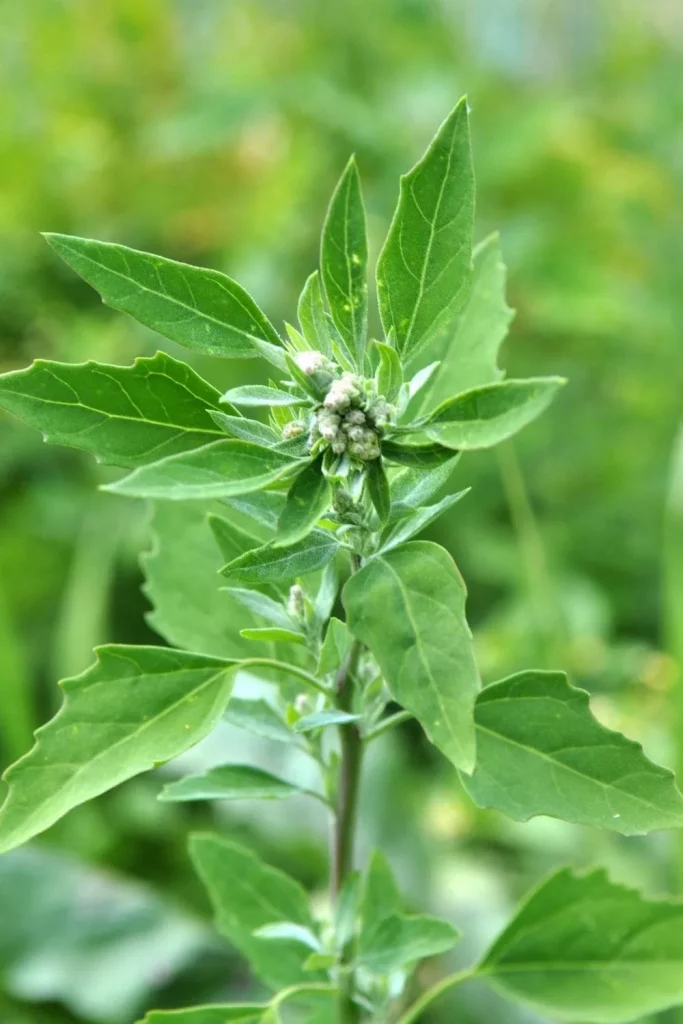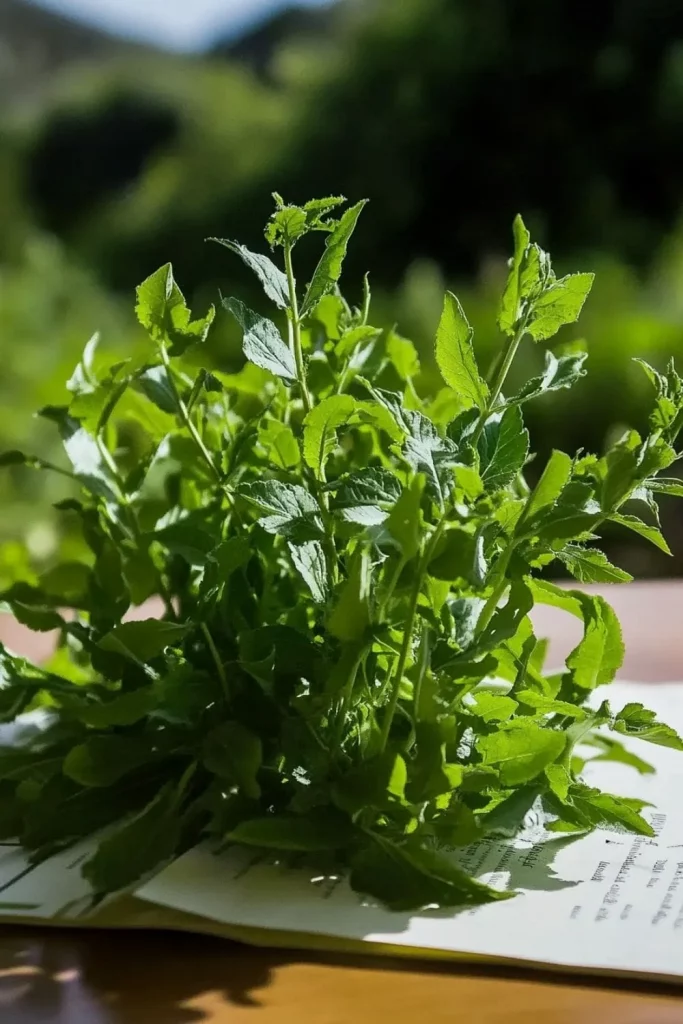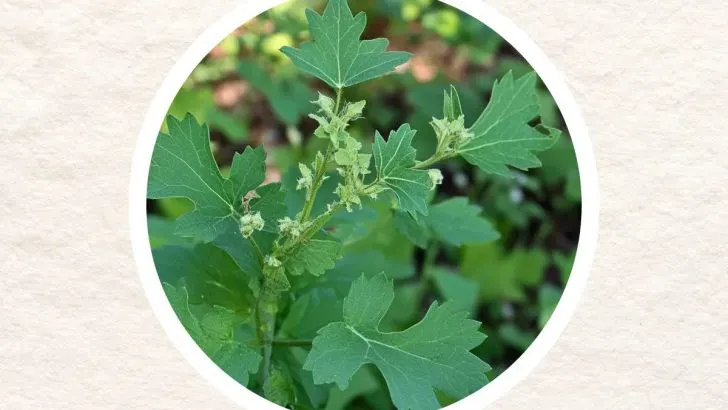White goosefoot, scientifically known as Chenopodium album and commonly called lamb’s quarters, wild spinach, or pigweed, is a resilient herbaceous plant with a rich history in both culinary and medicinal applications.
Often mistaken for just another weed, this unassuming green plant holds a treasure trove of health benefits, making it a valuable addition to your diet and herbal remedies.
Health Benefits
• Nutrient Powerhouse: White goosefoot stands out as a nutrient-dense superfood, packed with essential vitamins like A, C, and K, as well as vital minerals such as calcium, iron, magnesium, and potassium. Adding it to your diet can significantly boost your overall health.

• Rich in Antioxidants: This plant is abundant in antioxidants like beta-carotene and quercetin, which protect your cells from oxidative stress and help lower the risk of chronic diseases like cancer and heart disease.
• Natural Anti-Inflammatory: Thanks to its anti-inflammatory properties, white goosefoot may serve as a natural remedy for conditions like arthritis and inflammatory bowel disease, helping to reduce inflammation and ease discomfort.
• Digestive Aid: Traditionally used to promote digestive health, the high fiber content of this plant can help regulate your digestive system, prevent constipation, and support overall gut health.
• Weight Management Support: The fiber in white goosefoot can help you feel fuller for longer, potentially reducing your calorie intake and supporting weight management efforts.
• Blood Sugar Control: Early research suggests that white goosefoot may help regulate blood sugar levels, making it a promising natural option for those managing diabetes or trying to prevent it.
Culinary Uses

1. Salad Addition: Young white goosefoot leaves offer a refreshing, slightly tangy flavor that can brighten up any salad. Whether used raw or lightly blanched, they add a nutritious twist to your greens.
2. Spinach Alternative: You can swap out spinach or other leafy greens for white goosefoot in your cooking. Whether sautéed or steamed, it brings a unique flavor and a healthy boost to your meals.
3. Smoothie Booster: Adding white goosefoot to your smoothies can enhance their nutritional value while blending seamlessly with the sweetness of fruits.
4. Soup and Stew Ingredient: This versatile plant can also be added to soups and stews, enriching both the flavor and nutritional profile of your dishes.
Medicinal Uses
1. Herbal Infusion: Brewing a tea from the leaves of white goosefoot can provide a soothing drink that helps with digestion and reduces oxidative stress in the body.
2. Topical Poultice: Applying a poultice made from white goosefoot leaves can offer relief from skin irritations, insect bites, rashes, and minor burns.

3. Concentrated Extract: For more potent medicinal benefits, a tincture can be made, though it’s important to seek professional advice, especially if you’re taking other medications or have existing health conditions.
Precautions and Considerations
• Proper Identification: It’s crucial to correctly identify white goosefoot to avoid confusion with harmful look-alike species.
• Allergy Precaution: Start with small amounts to ensure you don’t have an allergic reaction.
• Harvest with Care: Make sure to gather white goosefoot from clean, chemical-free environments to avoid contamination.
• Consult a Professional: Before using white goosefoot medicinally, consult with a healthcare provider or certified herbalist, especially if you have ongoing health concerns or are on medication.
Once overlooked, white goosefoot is now being rediscovered for its wide range of health benefits and culinary versatility.
Whether you’re looking to enhance your nutrition, address specific health issues, or explore new culinary horizons, white goosefoot is a versatile herb worth incorporating into your routine—with proper care and professional guidance for its medicinal uses.


